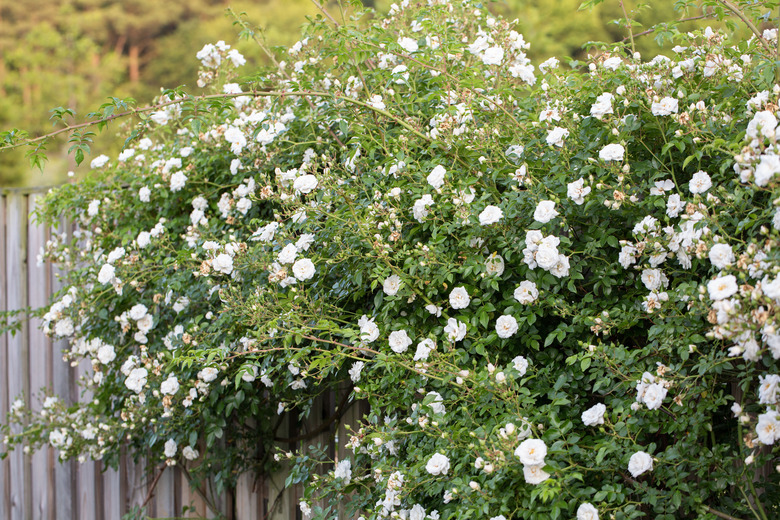How Can I Kill A Rose Bush?
Roses (Rosa spp.) can be a beautiful addition to your garden, but if you're undertaking a garden redesign, you may wish to transplant your rose bush or remove it altogether to make room for something new. It can be tough to get rid of a well-established rose. If you've made the decision to completely remove yours, though, you'll need to know how to kill a rose bush, which may involve both physical and chemical methods.
Tip
There are several ways to kill a rose bush, including cutting it back, removing it by the roots or using a chemical herbicide.
Cutting Back Rose Bushes
Cutting Back Rose Bushes
If you're physically removing your rose bush via the roots, cutting it back will be helpful and will minimize your job down the line. However, if you're attempting to kill your rose bush using a chemical herbicide, it may be better to leave as much foliage as possible to give the product a greater surface area to which it can adhere.
Use sharp pruning shears or loppers to cut back excess growth, particularly focusing on any dead or damaged stems. Make sure to wear protective gardening gloves when doing this, as many types of roses are thorny, and it can be painful to touch them.
Removing Rose Bush Roots
Removing Rose Bush Roots
Removing a rose bush physically depends on pulling out all of the roots. If you don't, there's a chance that it can regrow in the future. You should water the base of your bush thoroughly the day before to help loosen the earth around it. Use a spade to dig around the edges of the plant to find the root ball. It will likely extend several inches on every side.
Once you've loosened the roots, you can pull out the rose bush. Make sure to either burn or throw away the plant rather than composting it. Keep a lookout for any regrowth in the area in which you've tried to kill your rose bush, as this indicates leftover roots that still need to be removed.
Chemical Rose Control
Chemical Rose Control
If you want to use a herbicide to kill your rose bush, carefully read product labels for the types of plants targeted or contact your local county extension office for guidance in selecting a suitable product. Glyphosate is an effective ingredient for killing rose bushes, but it may cause various health issues, so it may be safest to avoid it.
It's best to apply some types of herbicides in late summer and remove the dead bush by fall; some products are more effective when applied in spring. Try to choose a still, rain-free day to apply the product to prevent it from being blown or washed into other areas. Always take safety precautions when applying herbicide, including wearing protective eyewear and gloves.
Apply the herbicide according to the product's instructions, for example, by mixing the product with water in a sprayer and saturating the bush with it. Wait the prescribed number of days to see if the treatment has taken effect and reapply per the product instructions if necessary. Leave your dead rose bush for several weeks before attempting to remove it, as this will help ensure the herbicide has reached all areas of the root system.
It may also be necessary to use a herbicide as a stump killer once the bulk of your rose bush has been killed. You will need to drill holes into any remaining living stems and apply the product into these holes for maximum penetration.
References
- University of Connecticut: Multiflora Rose (Rosa multiflora)
- Royal Horticultural Society: Trees: Stump Removal and Treatment
- Missouri Department of Conservation: Multiflora Rose Control
- Royal Horticultural Society: Trees and Shrubs: Removing Suckers and Seedlings
- Home Depot: Compare N Save Concentrate Weed & Grass Killer 41% Glyphosate
